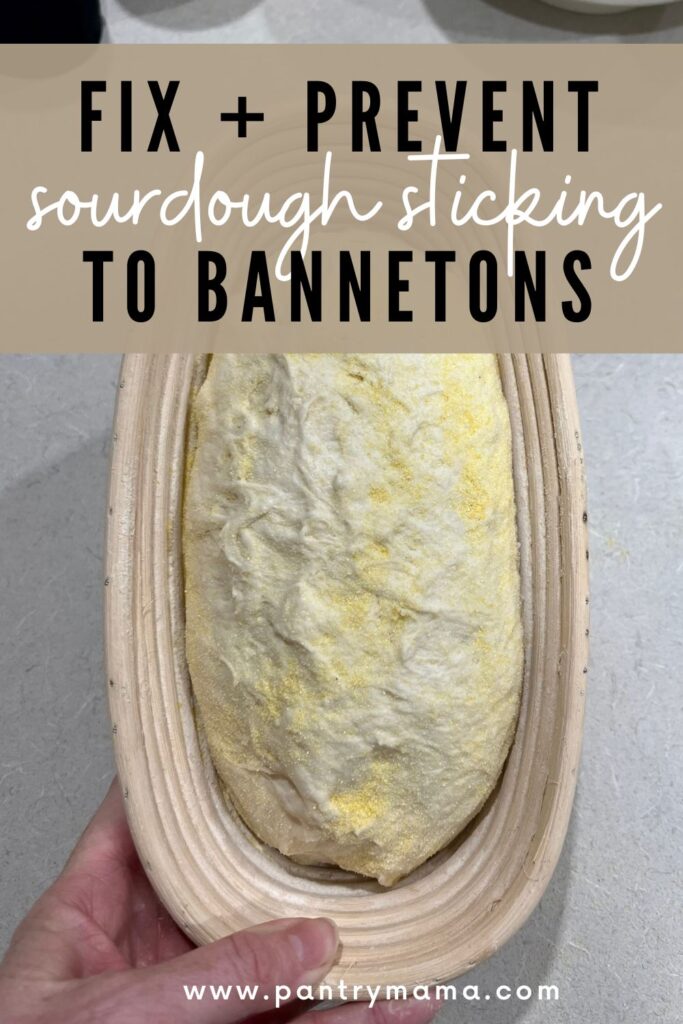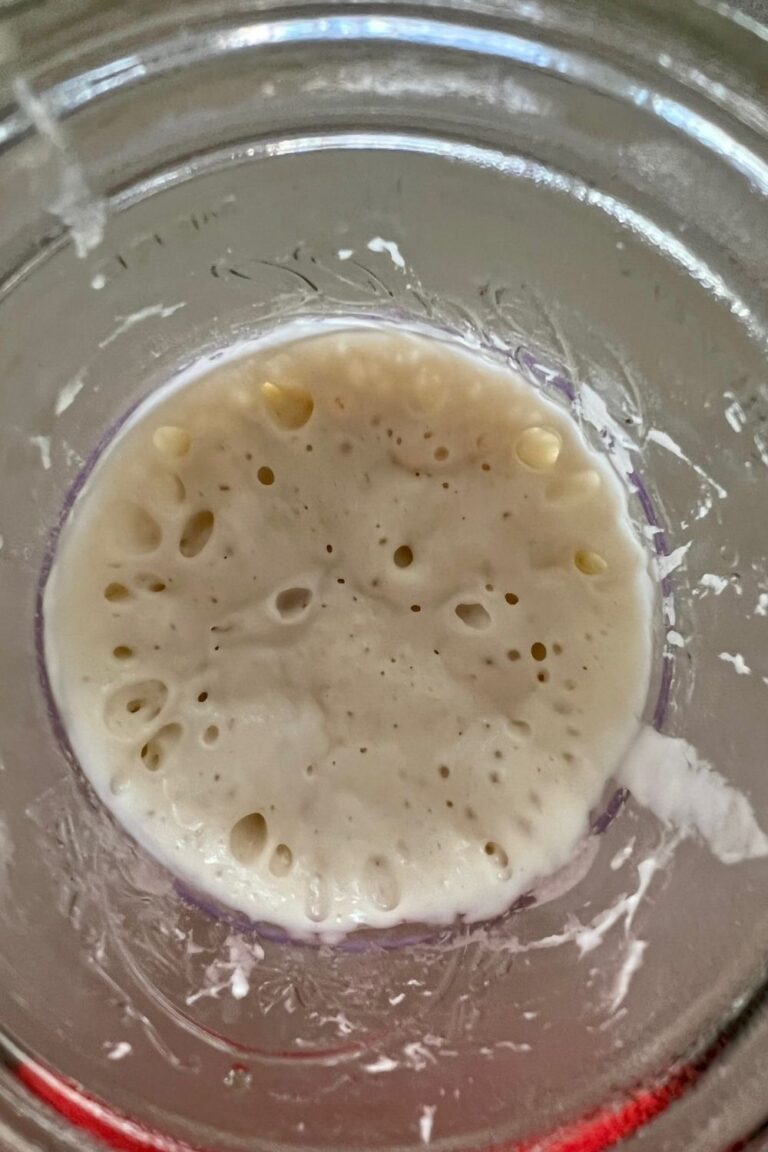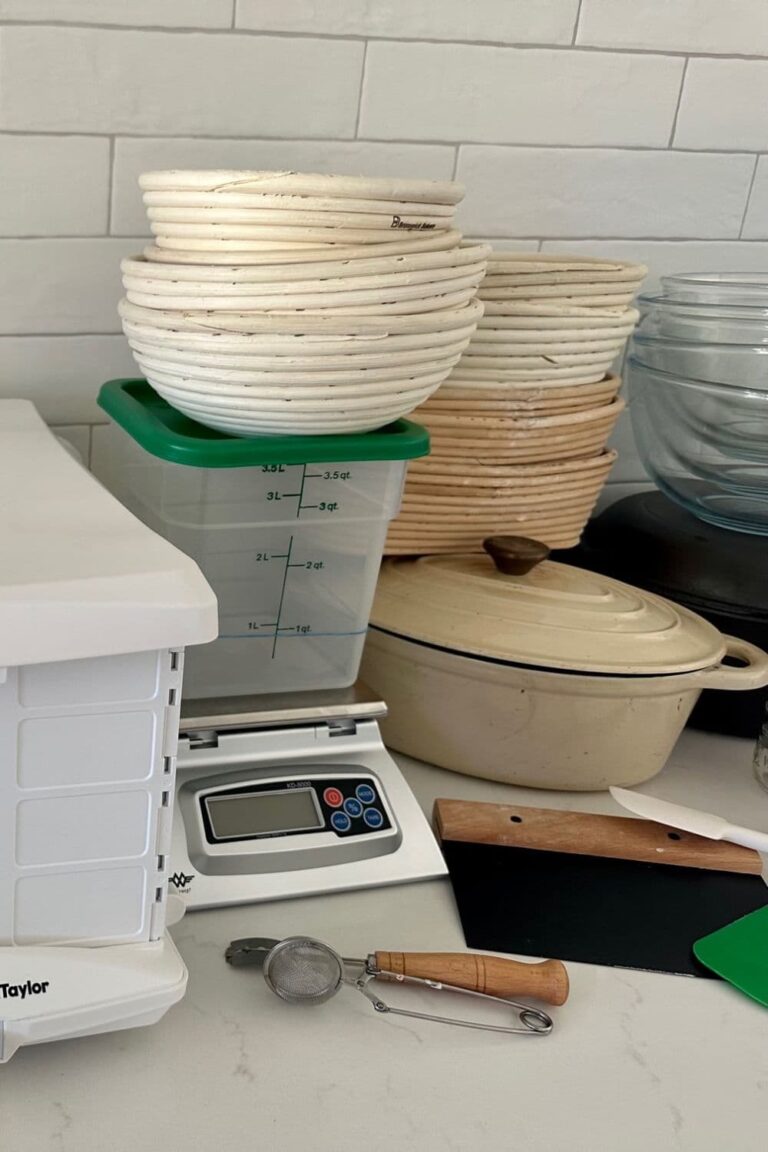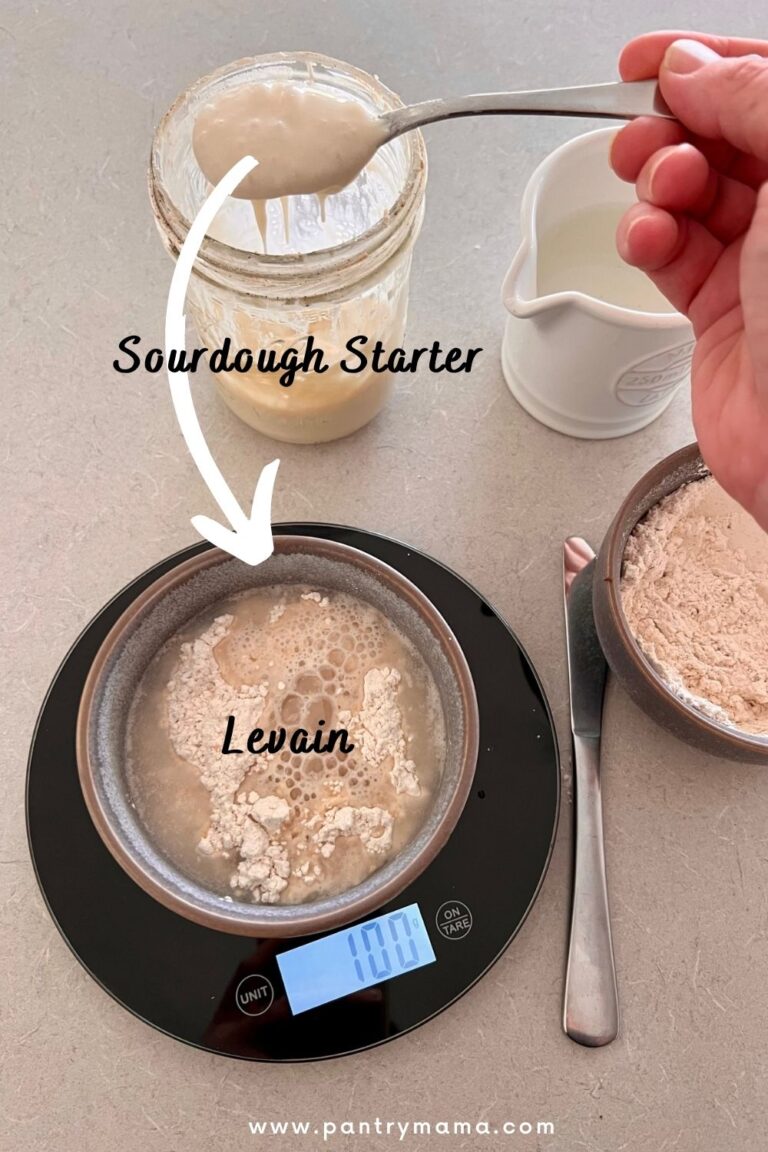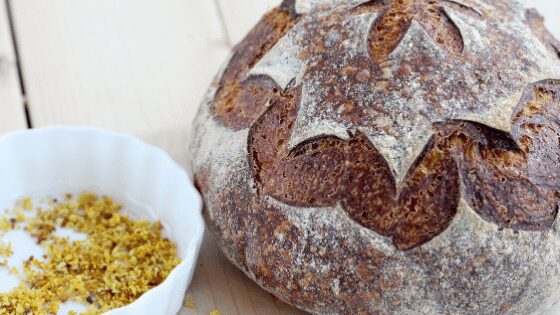Stop Sourdough Sticking To Bannetons: A How To Guide
This post may contain affiliate links.
Here's how to stop sourdough sticking to bannetons! Many people are scared away from using banneton proofing baskets for their sourdough because of the risk of their dough sticking.
But what if I told you there's an easy way to stop sourdough sticking to your bannetons? What if you could guarantee your sourdough will flip out of the proofing basket every single time? Or any dough for that matter.
If you're wondering how to do it ... read on! Plus I've included instructions for how to save your dough if it has stuck inside the proofing basket.
This guide will help you choose the right size banneton for your dough weight and this post will help you care for your bannetons and prevent mold.
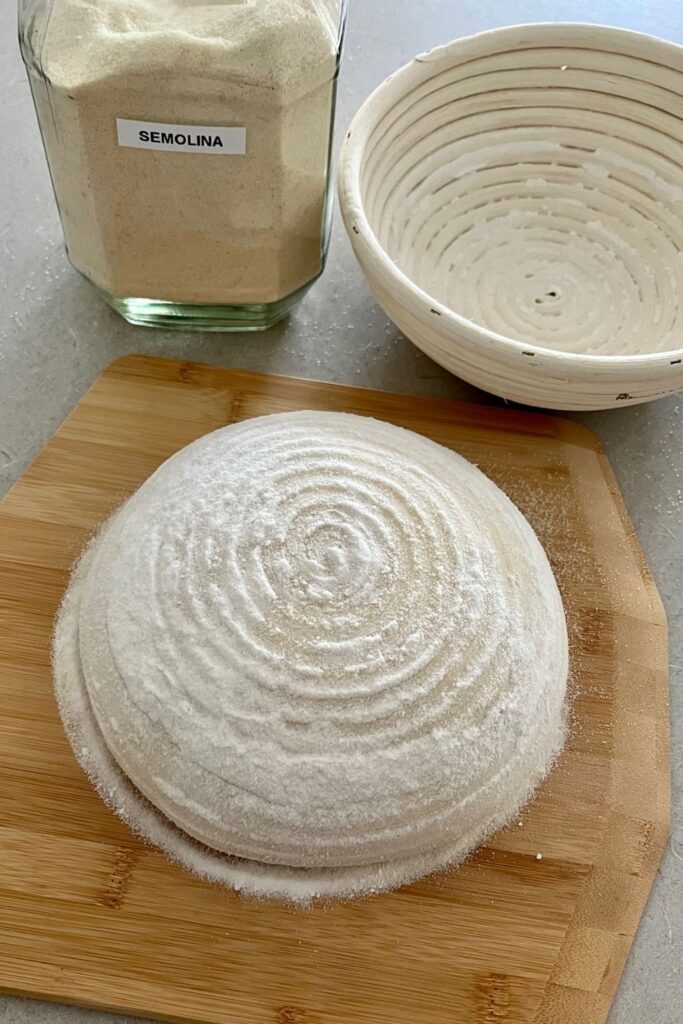
What Causes Sourdough To Stick To Bannetons and Proofing Baskets?
The dough can stick to the proofing basket for the following reasons:
- The proofing basket you have is new and has not been seasoned or treated.
- You have not had sufficient gluten development in your dough.
- Wet, sticky dough.
- Not letting the dough rest after proofing.
- Using the wrong amount or wrong type of flour to line your basket.
- Not using the right proofing basket (banneton).
Let's examine these reasons and see what we can do to fix and prevent your sourdough from sticking to your bannetons.
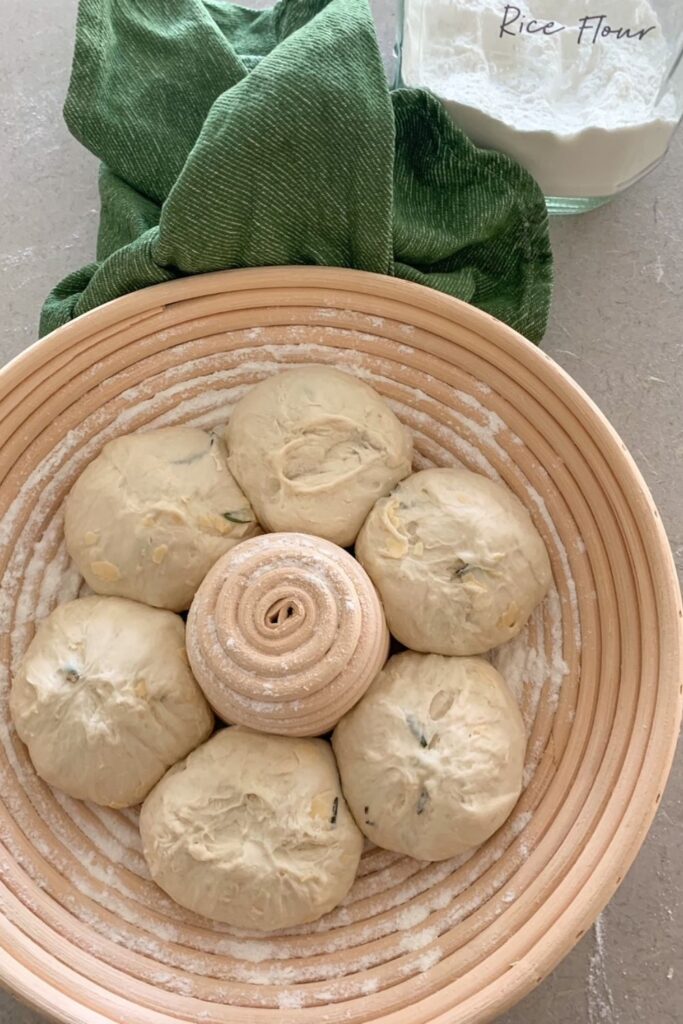
New Proofing Basket or Banneton
When you purchase a new banneton or proofing basket, it will be very smooth and porous. Remembering that one of it's purposes is to wick moisture away from your dough, so if you put fresh dough into a new banneton without treating it first, the dough will stick like glue!
One of the biggest causes of sourdough sticking to your banneton is that it hasn't been seasoned or cured before use.
Of course, the more you use it, the more non stick it will become but it does need to be "seasoned" before you put the dough in for the first time.
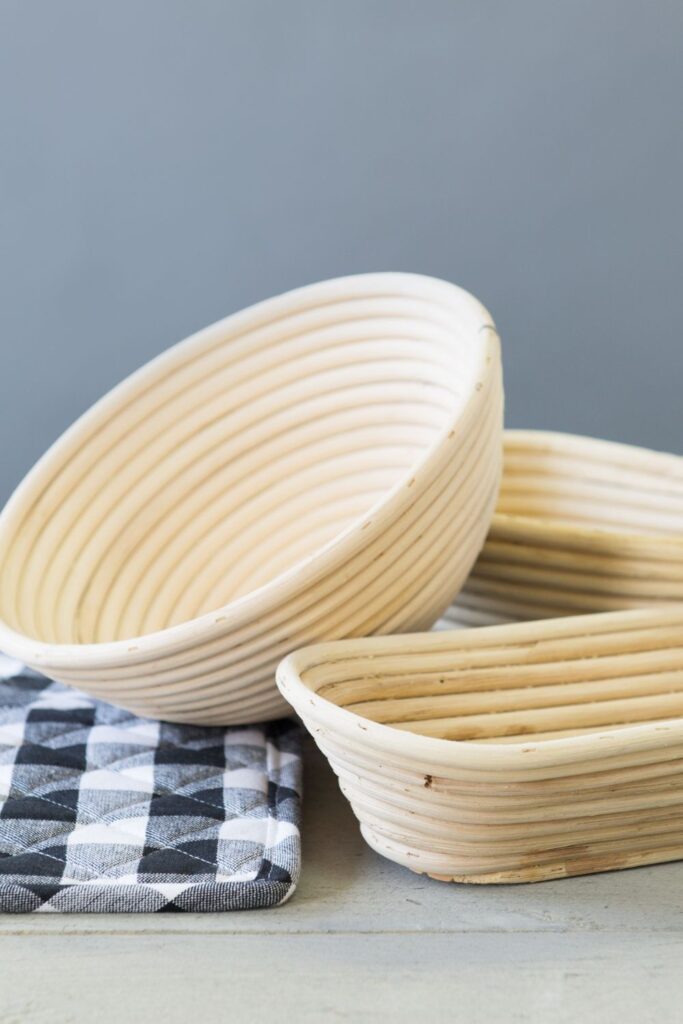
How To Season Your New Proofing Basket
Follow these steps to pre-treat, or season, your new banneton:
- Spritz the new banneton basket with water (a water atomiser works best).
- Now add around 20g of rice flour to the basket and shake it around to ensure that it coats every surface.
- Tap out the excess flour and allow the banneton to dry for around 30 minutes.
- Repeat the above process again.
- Once the banneton has dried, store it in a dry, well ventilated place to prevent mold. It's now ready to be used for your sourdough bread!
A thin layer of flour should now cover your proofing basket. You will still need to dust it with flour before each use to make sure it's completely non stick, but you'll only need a light dusting.
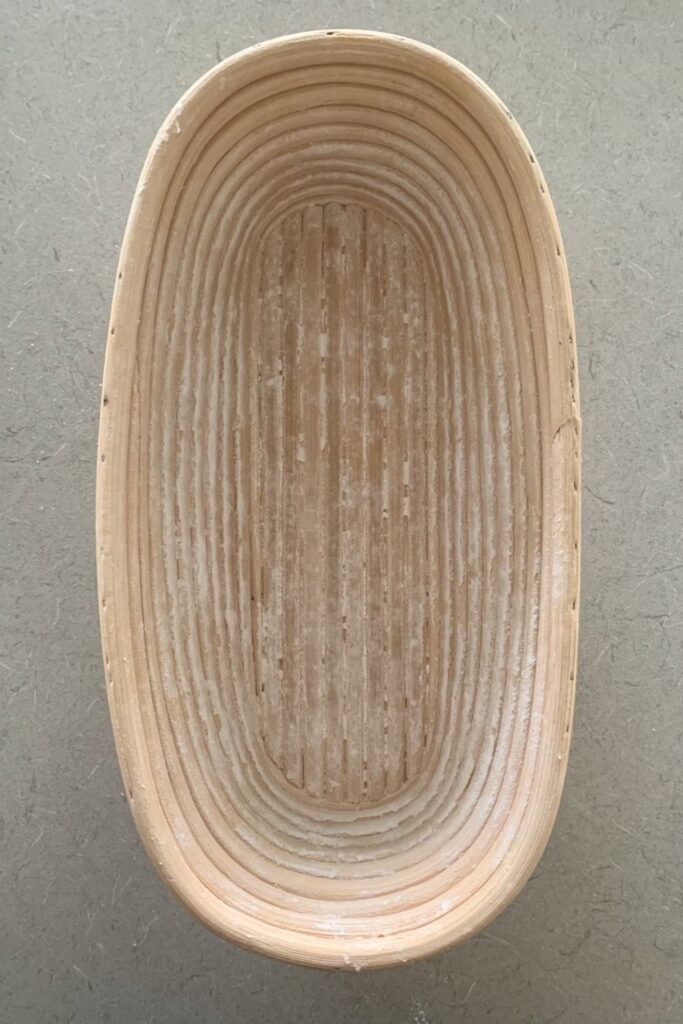
Make Sure Your Dough Has Sufficient Gluten Development
One of the biggest reasons that your sourdough sticks to your banneton is that the gluten network in your dough hasn't been sufficiently developed.
The gluten network is what gives your dough structure. A dough with strong gluten development is smooth, elastic and won't stick to your hands or the basket.
Gluten is developed through performing stretches and folds, kneading or coil folds. The way you develop the gluten in your dough is very much a personal preference.
Strong, well developed dough is easy to shape and will have a smooth, non sticky skin surrounding the dough. It's this skin that will prevent your dough from sticking to the banneton.

Using The Wrong Flour In The Banneton
The flour you use the dust the banneton is key to the dough not sticking. Rice flour is the best flour to dust the banneton with prior to adding your dough. It's best not to use all purpose flour at all for this job.
The reason rice flour is best is that it is gluten free so will not actually stick to your dough and it also absorbs less water more slowly than all purpose so will not turn to glue like plain flour.
If you don't have rice flour to dust your banneton, other flours that do a similar job are coarse semolina, corn meal or coconut flour. You'll often see me using semolina or corn meal in my bakes as I love the texture it creates on the crust.
Remember you don't need to use a tonne of flour to dust the banneton - so long as the gluten development in your dough is good and you've shaped it correctly, a light dusting is all you'll need. When you place the dough into the basket, gently pull the dough away from the sides and sprinkle a little more flour around just to be sure.
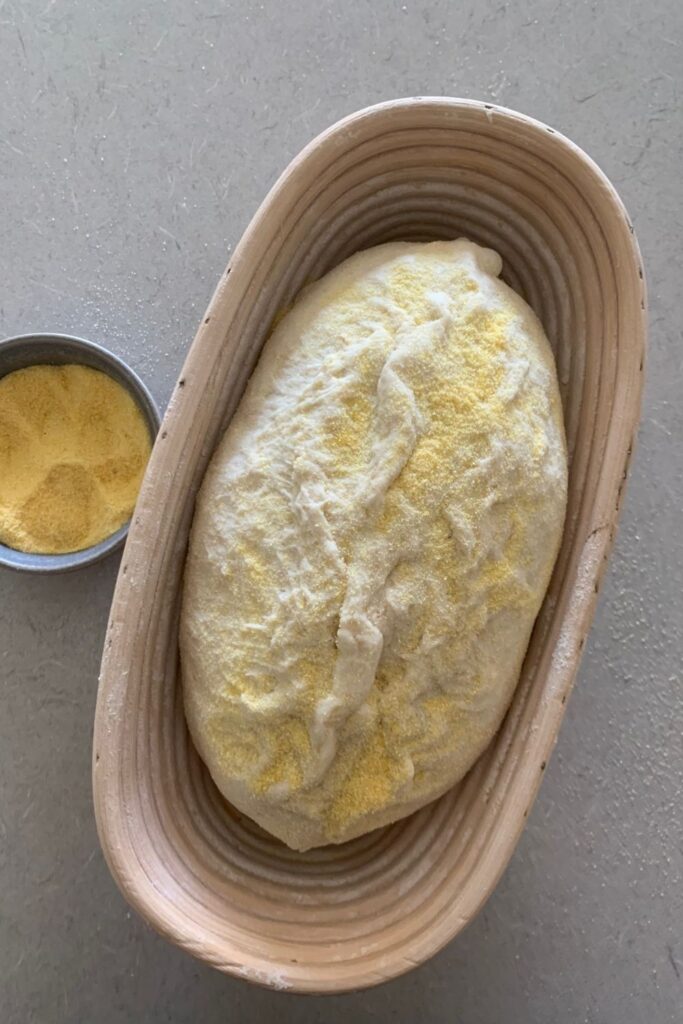
Not Using The Right Type of Basket
Bannetons or proofing baskets are engineered to support your dough while it proofs. They wick moisture away from the dough and ensures it keeps its shape.
Using other types of baskets, bowls, cloths etc is certainly possible, but are not always guaranteed to work.
You will find my guide to proofing basket alternatives here.
What If I'm Too Late ... How Do I Get Sticky Dough Out Of My Banneton?
If for some reason your dough has stuck to your banneton, you don't have to throw the whole thing in the bin. You can still try to get the dough out in one piece and bake it.
Here's how to get dough unstuck from a banneton:
- The key to trying to get your dough unstuck is to be very gentle! A heavy hand could easily result in a big mess!
- Place a piece of parchment paper over the banneton and tip the basket over so the parchment paper is sitting under the basket on the counter.
- Tap the basket a few times to see just how stuck the dough is.
- If it's not coming out at all, grab a pastry brush and dip it in a little water.
- Work your way around the edge of the dough, gently pushing the brush between the dough and the basket.
- This should gently loosen the dough enough to fall out of the basket when you tip it back over.
- If the dough doesn't come out in one piece, you may have to throw that dough in the compost and clean and season the banneton for your next bake. You can read about how to clean your banneton here.
I hope these tips help you to stop sourdough sticking to bannetons in your kitchen and you're able to take these ideas and use them today!
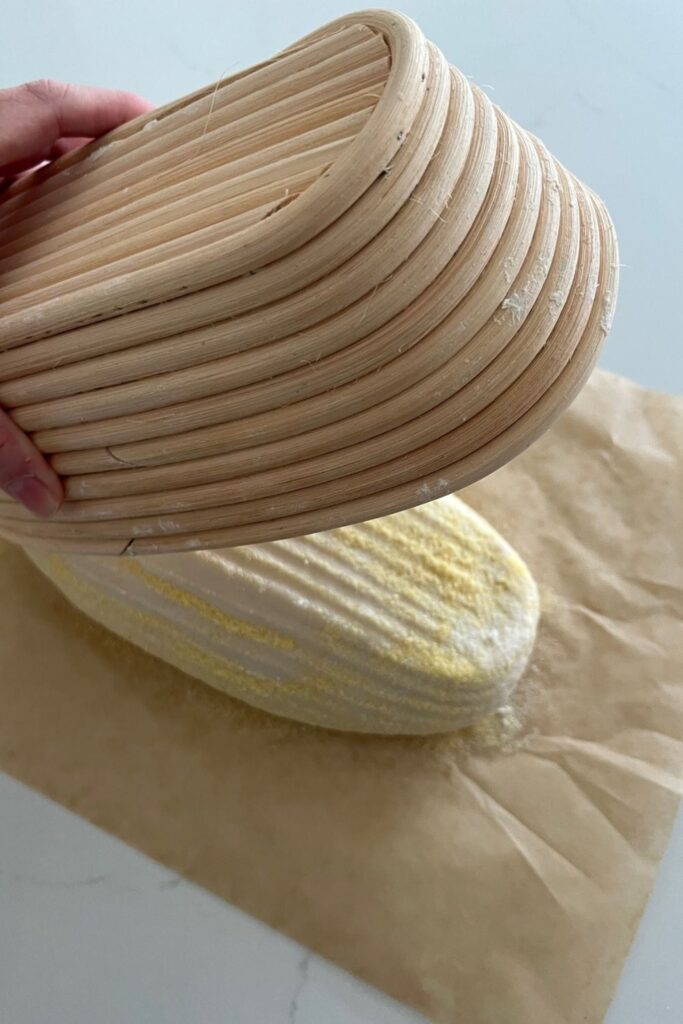
Frequently Asked Questions
You don't actually need to use the liner that came with your banneton basket. I find that it usually encourages the dough to stick to the basket more than if you don't use it. It's also one more thing to clean!
Yes, coconut flour is gluten free and is suitable to dust your banneton. I do advise to use rice flour to season the banneton however, and only use coconut flour to dust the banneton after it has been seasoned.
No, plastic bannetons do not need to be seasoned. You can still dust them with flour prior to adding your dough, but when using a plastic banneton, it's actually better to dust the dough with rice flour or semolina before placing it inside. This will prevent the dough from sticking to the plastic.
Yes, even if you do have a mishap and your dough sticks to the banneton and comes out looking a little misshapen, you should still bake it. There's a lesson in every loaf, so baking your dough will help you to improve your skills for the next bake!
